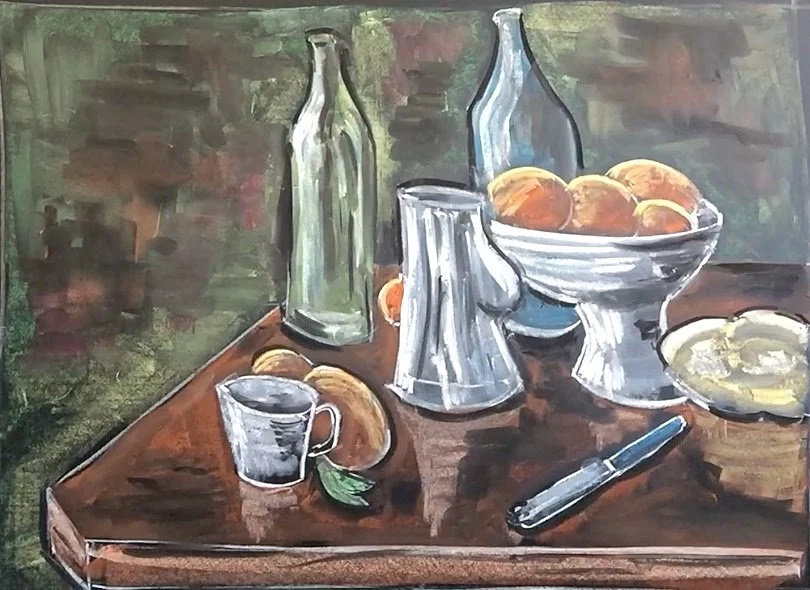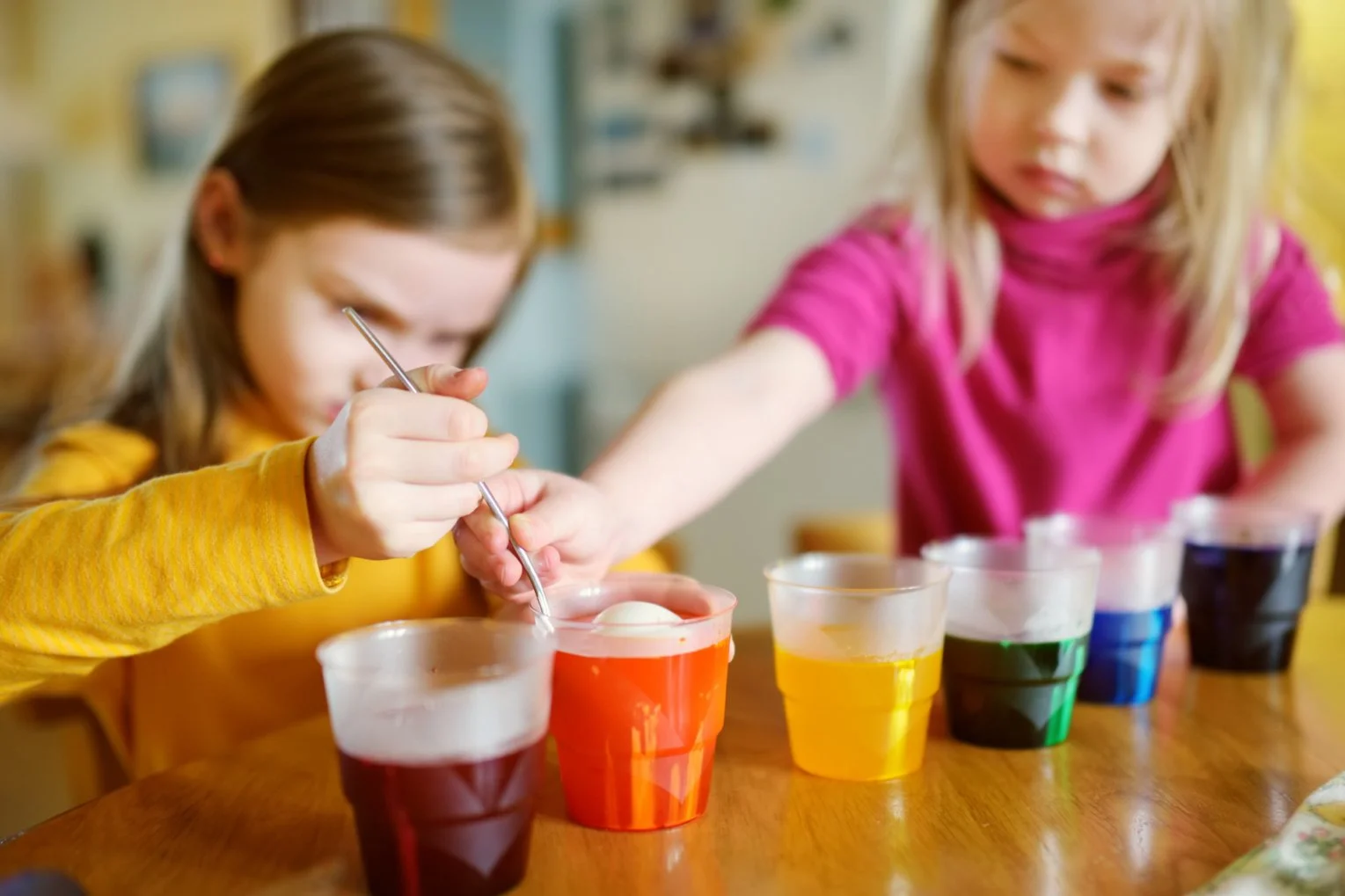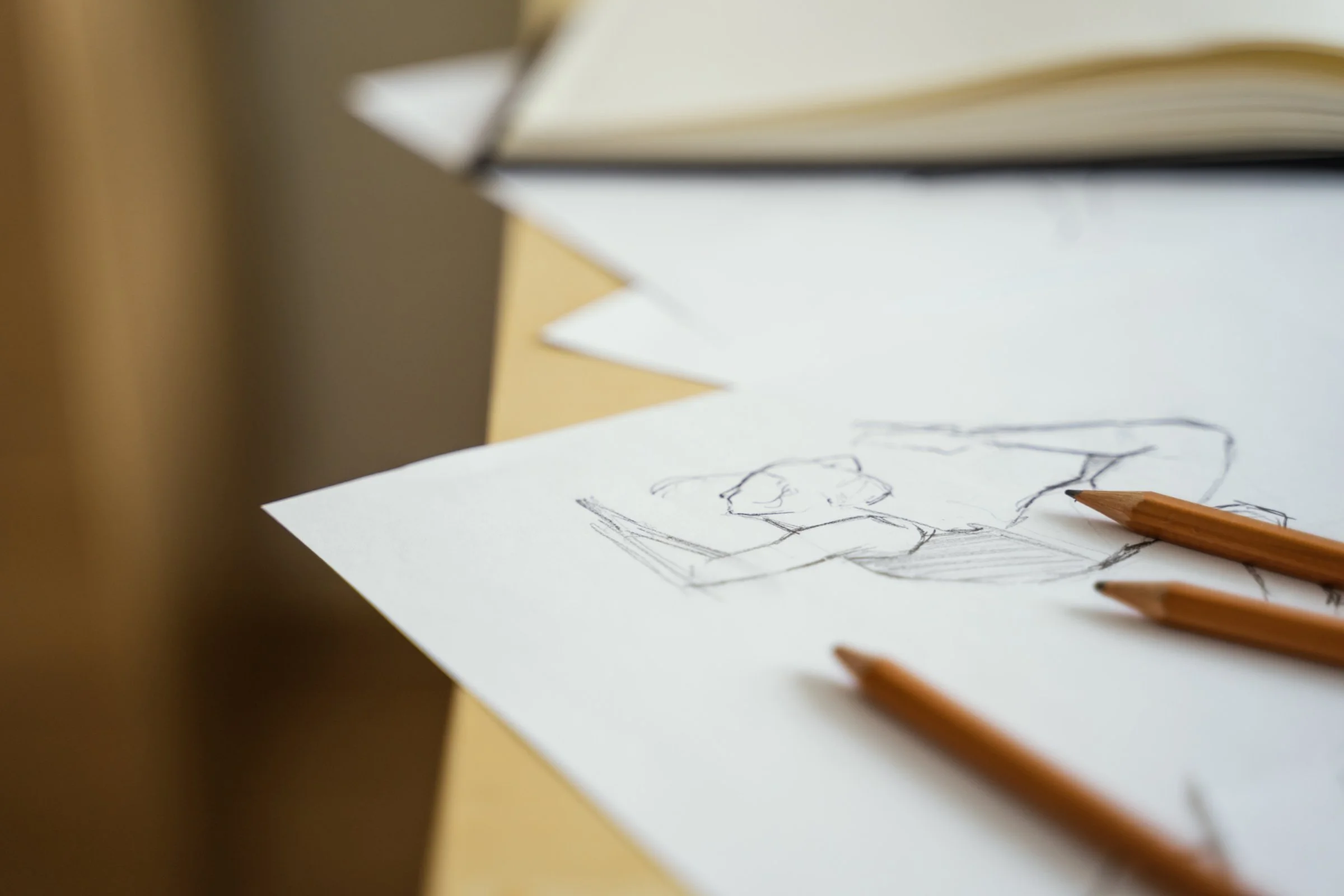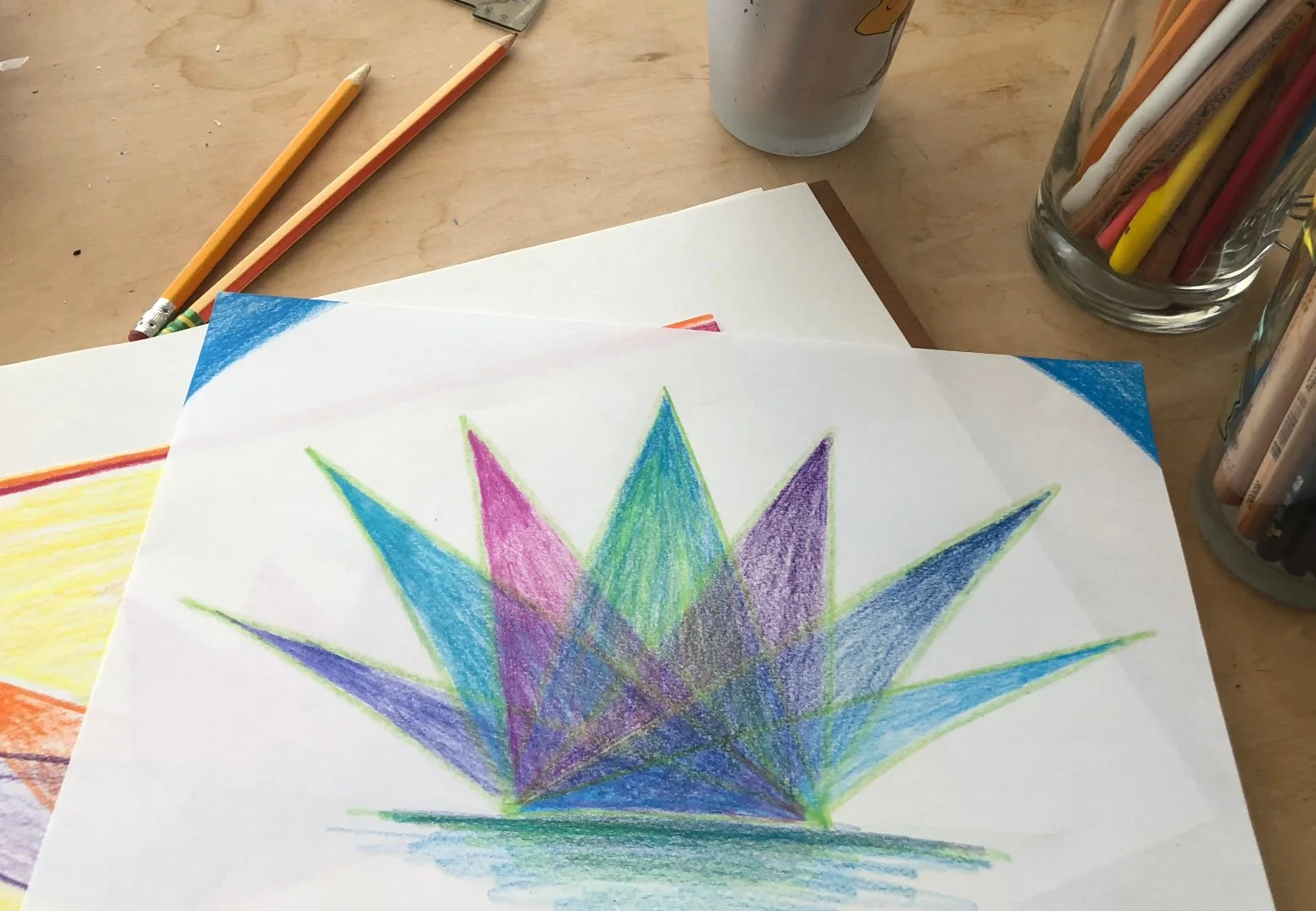Learning through Recreating: What studying great artists has to teach us.
An important aspect of middle school art curriculum in Waldorf Education is providing opportunities for students to find their own artistic style.
A Matisse-inspired still life chalk drawing from our Weekly Art Foundations course.
One of the best ways to do this? Recreate the works of great artists from the past!
We realize this may sound counterintuitive; how can copying artwork from another artist help a middle schooler find their own style - isn’t it stifling their creativity?
In Waldorf education, the practice of studying and emulating master artists aligns beautifully with its holistic, experiential approach to learning. Learning through imitation lays a strong foundation for creative expression!
The imitation is not about rigid replication but about deeply experiencing artistic techniques, composition, and color in a hands-on way.
Just as a young musician learns by playing classical pieces before composing their own music, young artists build confidence and skill by studying the masters.
Just as so much of the Waldorf curriculum does in 7th grade, we take our cues from the artists of the Renaissance. When the artistic world was expanding quickly and household names such as Leonardo di Vinci, Michelangelo and Raphael were in their creative primes, one of the ways hopeful apprentices learned was to recreate the style, technique and subjects of these (and other) artists. This method aligns with the Waldorf developmental principle that learning is most effective when it is embodied and experienced.
Through the process of copying entire great works of art or specific techniques individually, students learn foundational skills required to create a beautiful and complete piece.
A chalk drawing inspired by Monet’s “Water Lilies” series, from our Weekly Art Foundations course.
From setting the base, finding the most pleasing composition, and mixing colors, studying the masters serves as a stepping stone to personal artistic expression.
As we have discovered again and again, a strong foundation provides the confidence and ability to branch out and find one’s own style; copying masterworks isn’t just about technique—it engages the hands, heart, and mind.
Waldorf education seeks to cultivate the whole child, and working with master artists' techniques allows students to feel the art, not just analyze it.
Recreating an artist’s work is the epitome of learning through doing, which is what Waldorf education is all about!
In our art courses, we include various lessons that do just this: take a well-known artist’s work and techniques, and recreate them. From Claude Monet to Alma Thomas, Vincent van Gogh, to figure drawing as Michaelangelo once did, our courses draw on inspiration from great artists of the past and awaken our students’ own creative forces in a deeply meaningful way.
About the Authors
Robyn Beaufoy is Waldorfish’s CEO, and also a course instructor for Simple Season, Waldorf Art for Beginners, and Weekly Art Foundations. You’ll find her intuitive touches and influences throughout everything Waldorfish offers. Robyn has been in the world of education for over 25 years, with an MA in Education and a certification in Waldorf teaching - she also homeschooled both of her children for some of that time. In 2012 Robyn co-founded Waldorfish.com, creating it with the vision of making Waldorf inspired-art and pedagogy more accessible, joyful, and doable for homeschoolers all over the world.
Caitlin Amajor is Waldorfish’s course instructor for Geometry grades 5 & 6, and Botany, as well as our Administrative Assistant. From a young age, Caitlin has been immersed in Waldorf education, attending a Waldorf school from K-8. After receiving a BA in History, Caitlin gained her certification in Waldorf teaching, and spent seven years as a Waldorf class teacher in the upper grades. With a special fondness for watercolor painting and geometry, Caitlin loves bringing Waldorf education to her students all over the world, and seeing their own individuality and style bloom from the curriculum!












